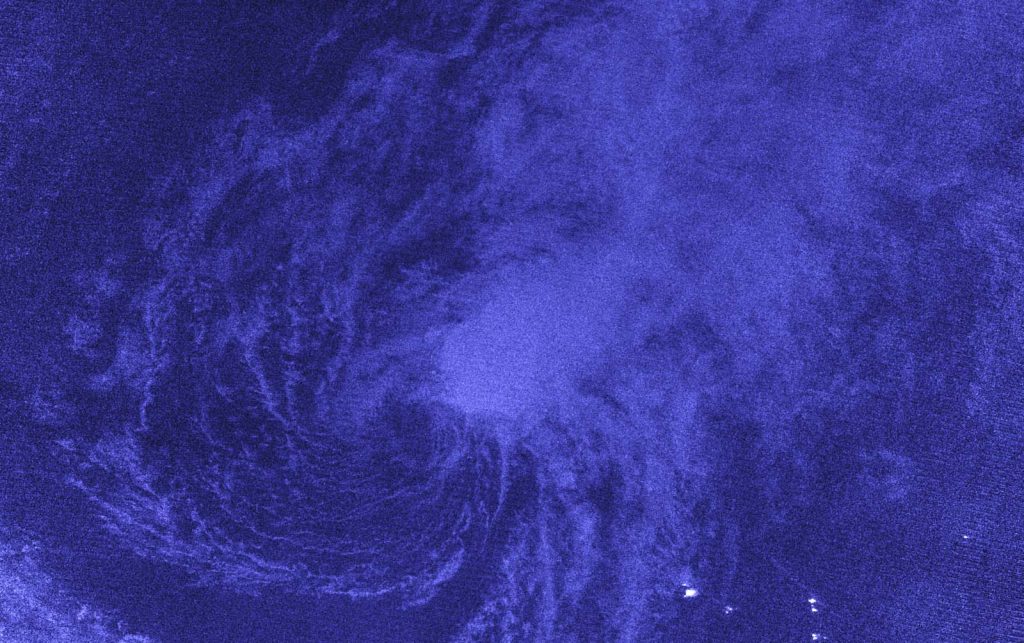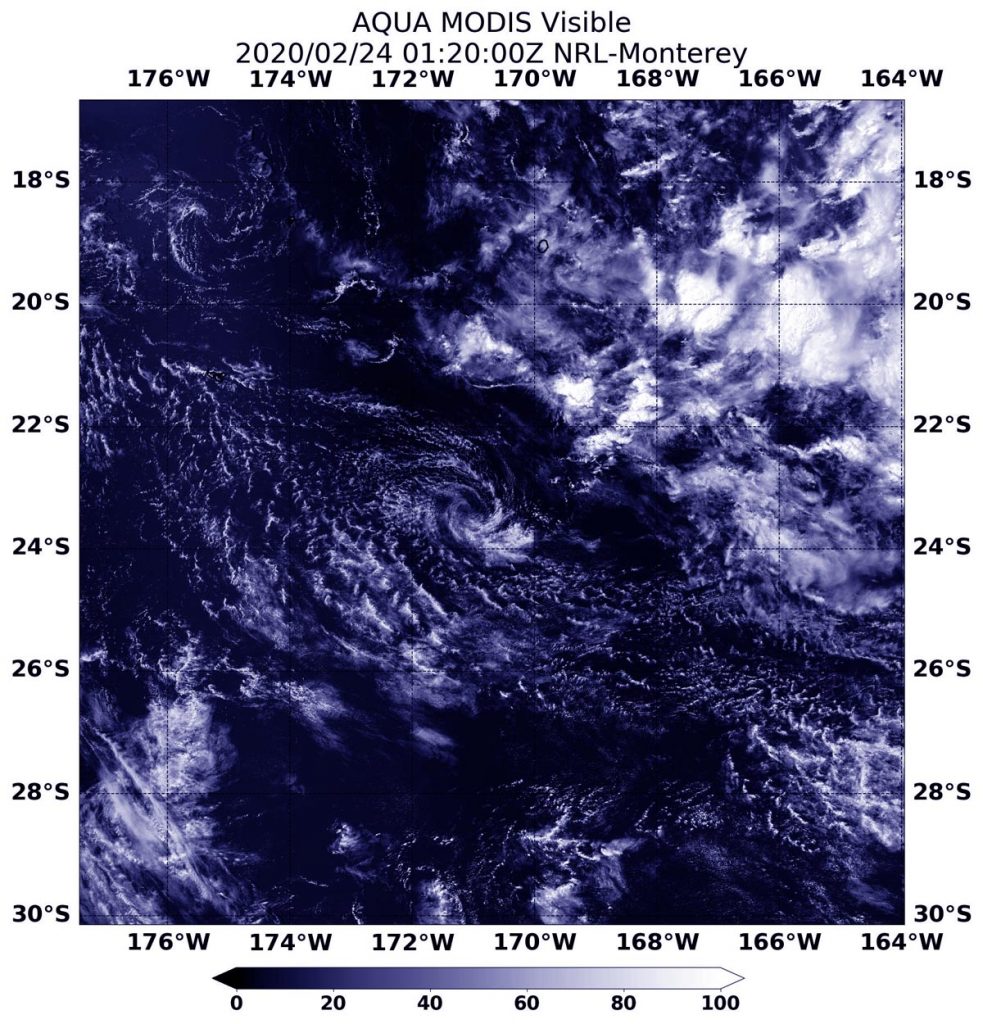Sep. 17, 2020 – NASA Finds a Fading Wispy Tropical Depression Vicky
NASA’s Terra satellite found Vicky to be a shadow of its former self, devoid of precipitation around its low-level center. Any precipitation had been pushed far to the northeast from wind shear. Vicky looked like a wispy ring of clouds on visible satellite imagery and nearby Hurricane Teddy is not helping.

On Sept. 17 at 9:25 a.m. EDT (1325 UTC), the Moderate Resolution Imaging Spectroradiometer or MODIS instrument aboard NASA’s Terra satellite provided a visible image of Vicky in the eastern North Atlantic Ocean. The image showed a swirl of wispy clouds around the low-level center with the bulk of clouds pushed far to the east-northeast of the center.
Dan Brown, a Senior Hurricane Specialist at NOAA’s National Hurricane Center in Miami, Fla. noted at 11 a.m. EDT on Sept. 17, “Vicky is feeling the effects of very strong upper-level winds associated with the outflow of Hurricane Teddy. These winds have caused the remaining convection to be stripped well away from the center, and recent ASCAT (a scatterometer instrument that measures winds) data indicates that Vicky has weakened to a tropical depression.”
Wind Shear Battering Vicky
Wind shear, that is, outside winds blowing at different directions at different levels in the atmosphere are battering Vicky. The NHC indicated that vertical wind shear of 40 to 50 knots is forecast to continue plaguing Vicky and the cyclone should continue to weaken and become a remnant low later today.
Vicky’s Status on Sept. 17
At 11 a.m. EDT (1500 UTC), the center of Tropical Depression Vicky was located near latitude 21.4 degrees north and longitude 38.2 degrees west. That is about 1,000 miles (1,610 km) west-northwest of the Cabo Verde Islands. The depression was moving toward the west near 14 mph (22 kph). Satellite wind data indicate that the maximum sustained winds have decreased to near 35 mph (55 kph) with higher gusts. The estimated minimum central pressure was 1008 millibars.
Vicky’s Fatal Forecast
A turn toward the west-southwest is expected later today, and that motion should continue through Friday. Additional weakening is forecast during the next day or so, and Vicky is expected to become a remnant low later today. The cyclone is forecast to dissipate Friday night or early Saturday, Sept. 19.
NASA Researches Earth from Space
For more than five decades, NASA has used the vantage point of space to understand and explore our home planet, improve lives and safeguard our future. NASA brings together technology, science, and unique global Earth observations to provide societal benefits and strengthen our nation. Advancing knowledge of our home planet contributes directly to America’s leadership in space and scientific exploration.
For updated forecasts, visit: www.nhc.noaa.gov




